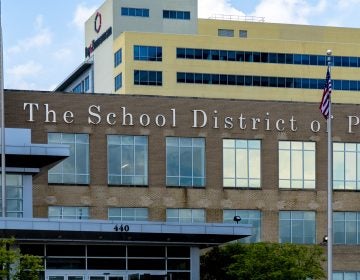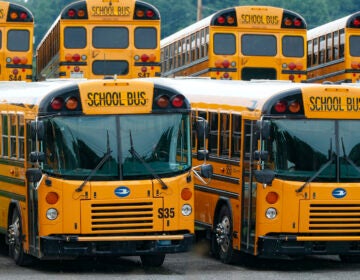Did COVID closures cause a public school exodus? Here’s what the numbers say
Despite the chaos and uncertainty, most parents opted to re-enroll their kids in public schools. Kindergarten, however, was a different story.
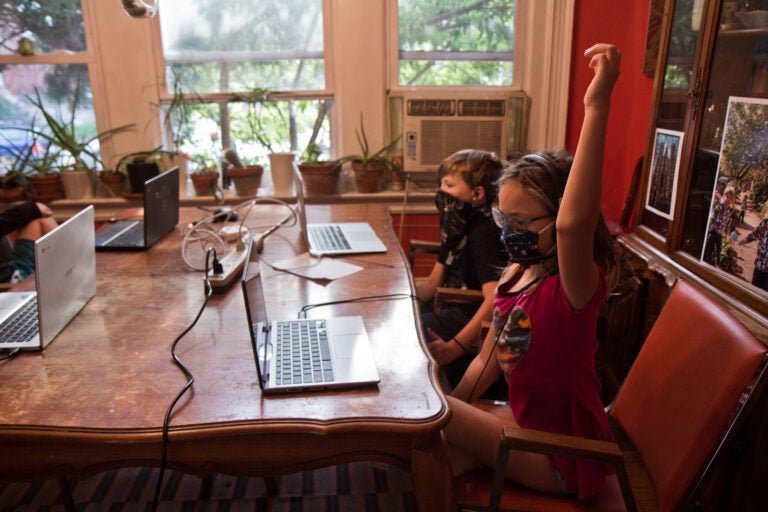
A few students from Lea Elementary School in West Philadelphia gather at a home for online learning with other kids. (Kimberly Paynter/WHYY)
Over the spring and summer, polls hinted at school enrollment declines that could shake up the educational landscape. Burned out and disgruntled by the spring attempt at virtual learning, large groups of parents said they were ready to yank their kids out of public school for homeschool or private options.
Fast forward to fall and early attendance data from the Philadelphia region indicates that the vast majority of students re-enrolled in traditional public school this fall — with a notable exception being a drop in would-be kindergartners.
WHYY sent requests to dozens of public school leaders in the Philadelphia region for elementary and middle-school enrollment figures and collected responses from 41 districts.
When looking at grades 1-8, the combined enrollment of those 41 districts was 2.9% lower than it was at the same time last year.
Those 41 districts grew by 0.6% the prior school year — indicating that a small group of public-school parents opted out of their local schools this fall.
Among families with children set to enter the school system, there was a more drastic enrollment shift. The districts sampled saw a 10.5% drop in kindergarten enrollment — a trend likely explained by the fact that 5-year-olds aren’t legally required to attend school in Pennsylvania and some parents were wary about this year as a child’s first in a formal K-12 setting.
Taken together, the data shows that a substantial number of parents delayed their child’s entry into public schools. A smaller group pulled students who were already enrolled.
But predictions of a massive homeschooling surge or significant shift to private schools have not materialized. The vast majority of families in the region stuck with their public schools, even though 34 of the 41 districts in this analysis began the year entirely online.
‘One less change’
The enrollment information gathered by WHYY is preliminary.
Every year, school districts and charters take an enrollment snapshot on Oct. 1 and have another two weeks to reconcile that information before sending it to the Pennsylvania Department of Education. The numbers presented here could change slightly over the next two weeks, but represent a basic sketch of enrollment trends around the region, including large districts such as Central Bucks, Downingtown Area, and Upper Darby.
Philadelphia, the state’s largest school district, did not provide exact Oct. 1 enrollment estimates. But Superintendent William Hite said previously the district’s 5,000-student drop was mostly caused by kindergarten declines.
Much can still change.
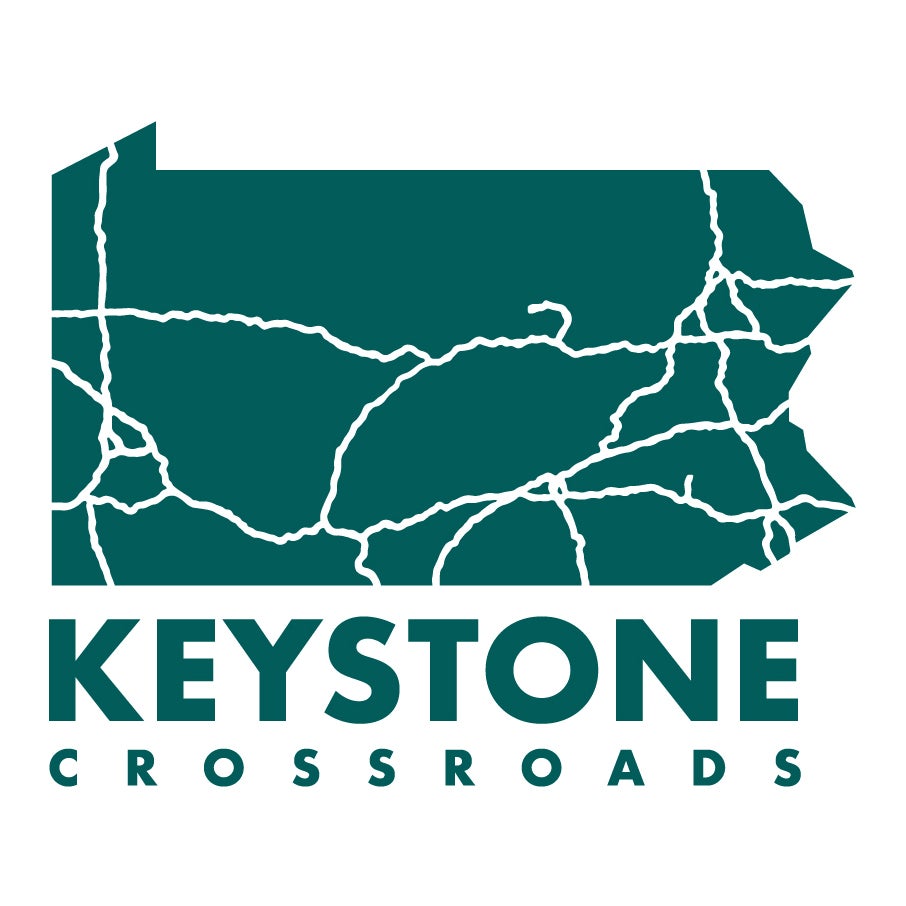
Get more Pennsylvania stories that matter
Many of the districts plan to reopen schools in October and November while still offering a virtual option. That could draw some families back. There’s also the looming possibility of a second viral wave that triggers more closures.
Delaware County mom Marie-Luise Faber said she was uncomfortable with sending her two elementary-aged children to a physical school building and thought briefly about enrolling them in a cyber charter school. But she decided to stick with the virtual education offered by her home district, William Penn, where her sixth-grader has been since kindergarten.
“It was gonna be the most stable thing…in all this chaos,” said Faber, who lives in Lansdowne. “It would just be one less change.”
Her district, she added, has vastly improved its virtual programming since the spring, when schools hastily went online.
Schools that specialize in virtual learning have seen an uptick in enrollment.
The Pennsylvania Coalition of Public Charter Schools said that the state’s 14 cyber charter schools have enrolled 14,000 new students since the pandemic began in mid-March. That includes students drawn from all parts of the state.
Testifying before the state legislature this week, traditional public school advocates also said they’ve seen an uptick in cyber charter enrollments, which correspond with larger tuition payments going from district schools to cybers. Advocates have used this shift to justify asking for more federal coronavirus relief aid to be channeled to traditional districts.
Samantha Taggart of Levittown may become one of those parents who switch to a cyber charter, but she’s not ready to take the plunge.
“It’s still on my mind,” said Taggart, a mother of three with a 2nd-grader and kindergartener in the Pennsbury School District. “It’s on the backburner right now.”
Asked to describe the online education offered through her district, she responds with an exasperated, “Oy!”
Her kids’ class schedules have shifted unexpectedly, she said. And it’s draining trying to get them to log on every day.
“I’m about to shave my head because I’m about to pull out my hair,” Taggart said.
Even with the frustration, she’s not yet ready to sever ties with the district. Her 2nd-grader has special needs and she said Pennsbury has historically done a great job providing supplementary services. She also has strong relationships with administrators that she doesn’t want to lose.
“I’m kinda thanking God right now that I’m in Pennsbury,” Taggart said. “I’m safe. I’m good. I’m sticking to it.”
Even though the coronavirus crisis has introduced uncertainty and frustration, many parents still feel safer with the district teachers and staff they’ve come to know.
Christopher Dormer, superintendent of the Norristown Area School District in Montgomery County, said his district saw a late surge in K-2 enrollment. He believes it was because families wanted to enroll, but needed to secure child care first.
As of Oct. 1, kindergarten enrollment was down about 9%, but Dormer said that’s only slightly worse than projections based on the district’s falling birth rate. For grades 1-8, the district’s enrollment dropped a little less than 2%.
“I tried to communicate early to families, ‘This is what we’re going to be able to do,’” said Dormer, whose district was among the earliest to announce an all-virtual start to the school year. “It does feel good that parents have confidence in us — that they’re sticking with us through this period of virtual right now.”
Editor’s note: There are variations in how the state counts enrollment for high school students who attend vocational-technical schools. Because of those variations, WHYY omitted data from grades 9-12.
WHYY is your source for fact-based, in-depth journalism and information. As a nonprofit organization, we rely on financial support from readers like you. Please give today.




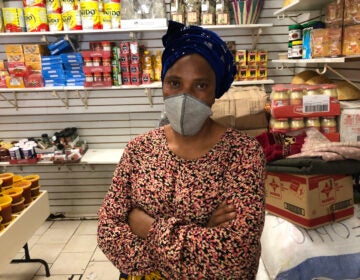
![CoronavirusPandemic_1024x512[1]](https://whyy.org/wp-content/uploads/2020/03/CoronavirusPandemic_1024x5121-300x150.jpg)

